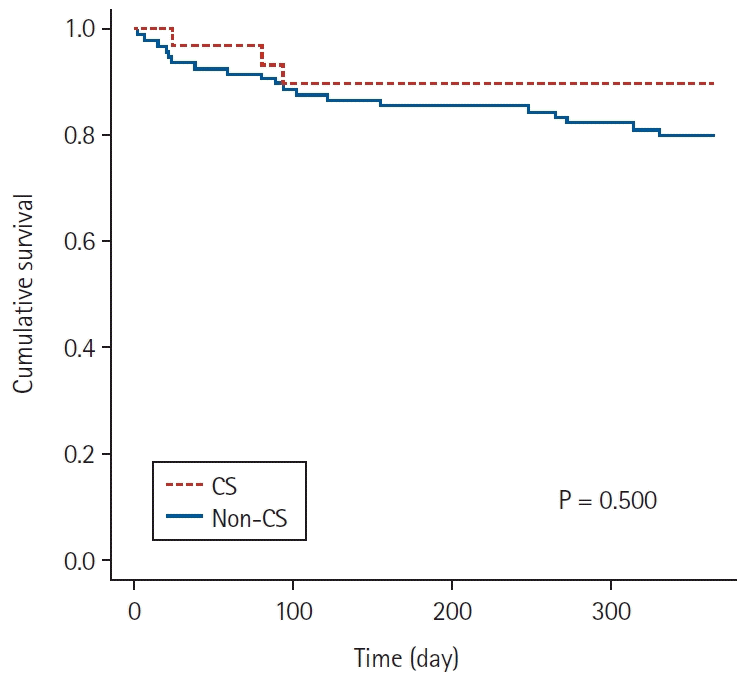1. Kim JY, Lee HS, Chung MJ, Park JY, Park SW, Song SY, et al. Bleeding complications and clinical safety of endoscopic retrograde cholangiopancreatography in patients with liver cirrhosis. Yonsei Med J. 2019; 60:440–5.

2. Dai WC, Chok KS, Sin SL, Chan AC, Cheung TT, Wong TC, et al. Impact of intraoperative blood transfusion on long-term outcomes of liver transplantation for hepatocellular carcinoma. ANZ J Surg. 2018; 88:E418–23.

3. Yokoyama AP, Kutner JM, Sakashita AM, Nakazawa CY, de Paula TA, Zamper R, et al. Risk factors for transfusion after orthotopic liver transplantation. Transfus Med Hemother. 2019; 46:431–9.

4. Landers DF, Hill GE, Wong KC, Fox IJ. Blood transfusion-induced immunomodulation. Anesth Analg. 1996; 82:187–204.

5. Duramaz A, Bilgili MG, Bayram B, Ziroğlu N, Edipoğlu E, Öneş HN, et al. The role of intraoperative cell salvage system on blood management in major orthopedic surgeries: a cost-benefit analysis. Eur J Orthop Surg Traumatol. 2018; 28:991–7.

6. Pinto MA, Chedid MF, Sekine L, Schmidt AP, Capra RP, Prediger C, et al. Intraoperative cell salvage with autologous transfusion in liver transplantation. World J Gastrointest Surg. 2019; 11:11–8.

7. Horstmann WG, Swierstra MJ, Ohanis D, Rolink R, Kollen BJ, Verheyen CC. Favourable results of a new intraoperative and postoperative filtered autologous blood re-transfusion system in total hip arthroplasty: a randomised controlled trial. Int Orthop. 2014; 38:13–8.

8. Lee K, Lee S, Jang EJ, Kim GH, Yoo S, Lee M, et al. The association between peri-transplant RBC transfusion and graft failure after kidney transplantation: a nationwide cohort study. J Clin Med. 2021; 10:3750.

9. Ashworth A, Klein AA. Cell salvage as part of a blood conservation strategy in anaesthesia. Br J Anaesth. 2010; 105:401–16.

10. Ivanics T, Shubert CR, Muaddi H, Claasen MP, Yoon P, Hansen BE, et al. Blood cell salvage and autotransfusion does not worsen oncologic outcomes following liver transplantation with incidental hepatocellular carcinoma: a propensity score-matched analysis. Ann Surg Oncol. 2021; 28:6816–25.

11. Kim JM, Kim GS, Joh JW, Suh KS, Park JB, Ko JS, et al. Long-term results for living donor liver transplant recipients with hepatocellular carcinoma using intraoperative blood salvage with leukocyte depletion filter. Transpl Int. 2013; 26:84–9.

12. Massicotte L, Thibeault L, Beaulieu D, Roy JD, Roy A. Evaluation of cell salvage autotransfusion utility during liver transplantation. HPB (Oxford). 2007; 9:52–7.

13. Pinto MA, Grezzana-Filho TJ, Chedid AD, Leipnitz I, Prediger JE, Alvares-da-Silva MR, et al. Impact of intraoperative blood salvage and autologous transfusion during liver transplantation for hepatocellular carcinoma. Langenbecks Arch Surg. 2021; 406:67–74.

14. Hendriks HG, van der Meer J, Klompmaker IJ, Choudhury N, Hagenaars JA, Porte RJ, et al. Blood loss in orthotopic liver transplantation: a retrospective analysis of transfusion requirements and the effects of autotransfusion of cell saver blood in 164 consecutive patients. Blood Coagul Fibrinolysis. 2000; 11 Suppl 1:S87–93.

15. de Boer MT, Molenaar IQ, Hendriks HG, Slooff MJ, Porte RJ. Minimizing blood loss in liver transplantation: progress through research and evolution of techniques. Dig Surg. 2005; 22:265–75.

16. Cleland S, Corredor C, Ye JJ, Srinivas C, McCluskey SA. Massive haemorrhage in liver transplantation: Consequences, prediction and management. World J Transplant. 2016; 6:291–305.

17. Eghbal MH, Samadi K, Khosravi MB, Sahmeddini MA, Ghaffaripoor S, Ghorbani M, et al. The impact of preoperative variables on intraoperative blood loss and transfusion requirements during orthotopic liver transplant. Exp Clin Transplant. 2019; 17:507–52.

18. Sobreira Fernandes D, Pereira Real CC, Sá Couto Romão PA, Marcos Correia De Barros FB, Marques Aragão IM, Guimarães Fonseca LF, et al. Pre-operative predictors of red blood cell transfusion in liver transplantation. Blood Transfus. 2017; 15:53–6.
19. Massicotte L, Sassine MP, Lenis S, Roy A. Transfusion predictors in liver transplant. Anesth Analg. 2004; 98:1245–51.

20. Carless PA, Henry DA, Moxey AJ, O’Connell D, Brown T, Fergusson DA. Cell salvage for minimising perioperative allogeneic blood transfusion. Cochrane Database Syst Rev. 2010; (3):CD001888.

21. Meybohm P, Choorapoikayil S, Wessels A, Herrmann E, Zacharowski K, Spahn DR. Washed cell salvage in surgical patients: a review and meta-analysis of prospective randomized trials under PRISMA. Medicine (Baltimore). 2016; 95:e4490.
22. Rajendran L, Lenet T, Shorr R, Abou Khalil J, Bertens KA, Balaa FK, et al. Should cell salvage be used in liver resection and transplantation? A systematic review and meta-analysis. Ann Surg. 2023; 277:456–68.

23. Sankarankutty AK, Teixeira AC, Souza FF, Mente ED, Oliveira GR, Almeida RC, et al. Impact of blood salvage during liver transplantation on reduction in transfusion requirements. Acta Cir Bras. 2006; 21(Suppl 1):44–7.

24. Stone N, Sardana V, Missiuna P. Indications and outcomes of cell saver in adolescent scoliosis correction surgery: a systematic review. Spine. 2017; 42:E363–70.
25. Reitman CA, Watters WC 3rd, Sassard WR. The Cell Saver in adult lumbar fusion surgery: a cost-benefit outcomes study. Spine (Phila Pa 1976). 2004; 29:1580–3.
26. American Society of Anesthesiologists Task Force on Perioperative Blood Management. Practice guidelines for perioperative blood management: an updated report by the American Society of Anesthesiologists Task Force on Perioperative Blood Management*. Anesthesiology. 2015; 122:241–75.
27. Singh SK, Kumar B, Devenraj V, Kaushal D, Chandra T, Sethi R, et al. Safety and efficacy of intraoperative cell salvage in off-pump coronary artery bypass grafting. Indian J Thorac Cardiovasc Surg. 2017; 33:117–22.

28. Shen S, Zhang J, Wang W, Zheng J, Xie Y. Impact of intra-operative cell salvage on blood coagulation in high-bleeding-risk patients undergoing cardiac surgery with cardiopulmonary bypass: a prospective randomized and controlled trial. J Transl Med. 2016; 14:228.

29. Yanaral TU, Karaaslan P. Effect of cell salvage on bleeding, transfusion of blood products, and bleeding parameters in patients undergoing liver transplantation with intraoperative massive blood transfusion. Turk J Med Sci. 2022; 52:1311–21.






 PDF
PDF Citation
Citation Print
Print



 XML Download
XML Download